Looking for a truly multi-purpose piece of heavy equipment for your next project? The loader backhoe, a melding of tractor, excavator and loader, is considered by some to be the Swiss army knife of heavy equipment. It can dig, back-fill, handle material and, with the right attachments, carry out even more tasks. Loader backhoes are compact and versatile enough for everything from construction and demolition to landscaping and road building.
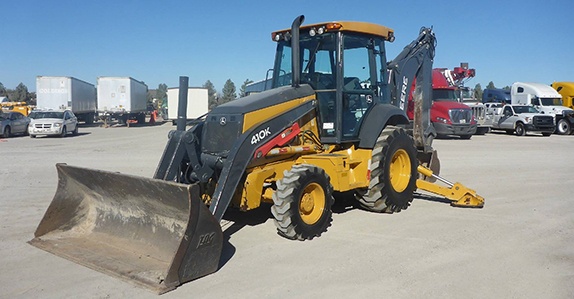
You’ll find a huge selection of loader backhoes from all the top manufacturers for sale online at IronPlanet and at Ritchie Bros. onsite auctions. But before you head out to inspect and buy, read our handy inspection tips:
1. Loader bucket, bucket teeth, bucket cutting edge and loader arms
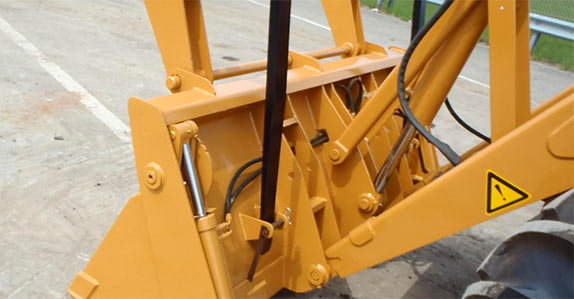
When inspecting the bucket for signs of wear, pay close attention to the leading edges, the thickness of the bucket side panels, the condition of bucket bottom and the integrity of bucket welds. Look closely at bucket teeth, checking for any missing, loose or worn teeth, or for missing bolts. Check the bucket cutting edge for scalloping or other signs of wear. Remember: it is possible to flip the cutting edge to extend its life. If you do need to replace an attachment, search our current inventory to find loader backhoe buckets and attachments being sold at upcoming Ritchie Bros. auctions or available online on IronPlanet.
After inspecting the bucket, move on to the loader arms and check for any cracks, re-welds or bends. Cracks can result when a machine has been pushed beyond its capabilities or from a structural failure. Re-welds are a sign of repair work, and bends could indicate that the machine was rolled during operation.
2. Hydraulic system and engine
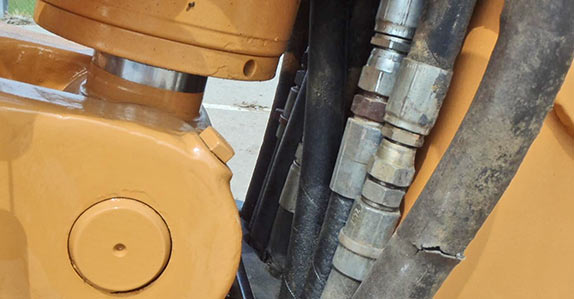
The hydraulic system is responsible for the efficient operation of the loader backhoe's many moving parts, so take your time and check every system component. Check hoses for any breaks or scratches and ensure couplings are all in good condition. Check cylinders for any signs of leaks or damage, including dents or scratches. Dents and scratches can not only be potential escape routes for fluid, but they can also serve as entry points for dirt and other hydraulic fluid contaminants.
While you are under the hood, check the engine for any obvious leaks, loose belts and the condition of filters. Most of the time, service technicians or operators will note the last service date on the air filter.
3. Tires and underneath
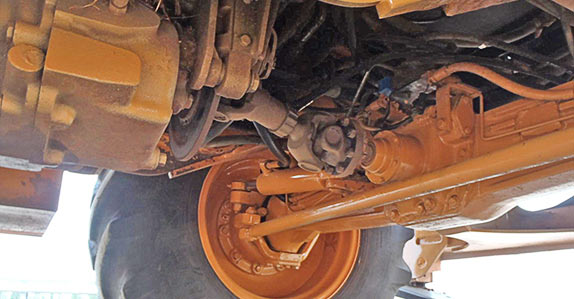
Loader backhoes typically come in three main types of axle configurations: 4x2, 4x4 or 4x4x4 (four-wheel drive and all-wheel steering). You can usually guess at the configuration by taking a look at the tire size or by taking a look underneath the machine for the absence or presence of a differential and drive shaft on the front axle. To verify axle configuration, check with the manufacturer. While inspecting the axles, pay close attention to the front axle seals, again looking for any signs of leaks.
Get under the loader backhoe and take a look at the driveshaft for any damage caused by rocks or bumpy terrain. If you hear any excessive noise coming from the drive shaft(s) when the machine is in operation, it could be a sign of damage to the transmission or that universal joints on the drive shaft(s) may need replacing. Check for any signs of leaks on the ground before moving on to inspect the cab.
4. Cab and general operation
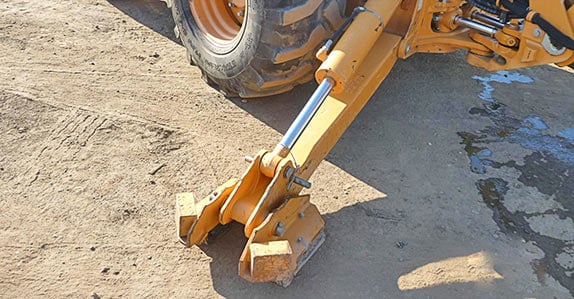
Step up to the cab, open the door and take a look inside. Evaluate the overall condition of the seat, joysticks and foot pedals. Consider if the hour meter reading is appropriate for the amount of wear present in the cab.
Start up the machine and carry out general operating tasks. Set the stabilizers or outriggers on the ground, lift tires off the ground and swing the boom from left to right, looking for any evidence of loose bushings. Next move the loader arm up and down, again checking for any play that could be a result of loose pins or bushings.
If you experience any loss in pressure when operating attachments, any difficulty steering, consistently, high fluid temperature or abnormal noise or "chattering", the hydraulic system is the most likely culprit.
The stabilizers depend on hydraulics to function. Take a close look at the stabilizers for any signs of leaks. Also ensure that the stabilizer pads are flat and not damaged. Check the integrity of the stabilizer arms by looking for any cracks or dents.
5. Backhoe boom, stick and bucket
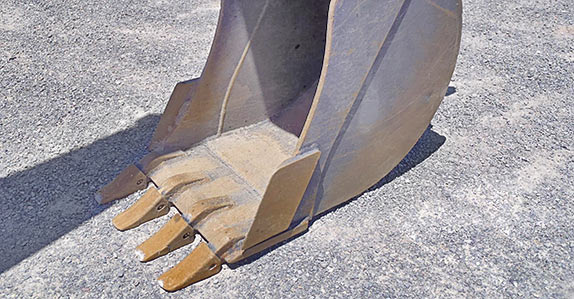
As you did for the loader arm, inspect the backhoe boom and stick for any cracks, re-welds or bends. And just as you did for the loader bucket, look at the overall condition of the hoe bucket, again looking for any missing teeth or bolts. Make sure the overall dig depth of the backhoe is the maximum you require.
Once you've completed your visual and functional inspection, ask to view the loader backhoe's available service record or work orders. Unless you are very experienced with heavy equipment, have a qualified mechanic or knowledgeable operator inspect your loader backhoe before the auction, so you can bid with confidence on auction day.
If you're interested in buying loader backhoes, see what’s available for sale on IronPlanet, including a large selection with IronClad Assurance Equipment Condition Certification, or find more at upcoming Ritchie Bros. onsite auctions.



